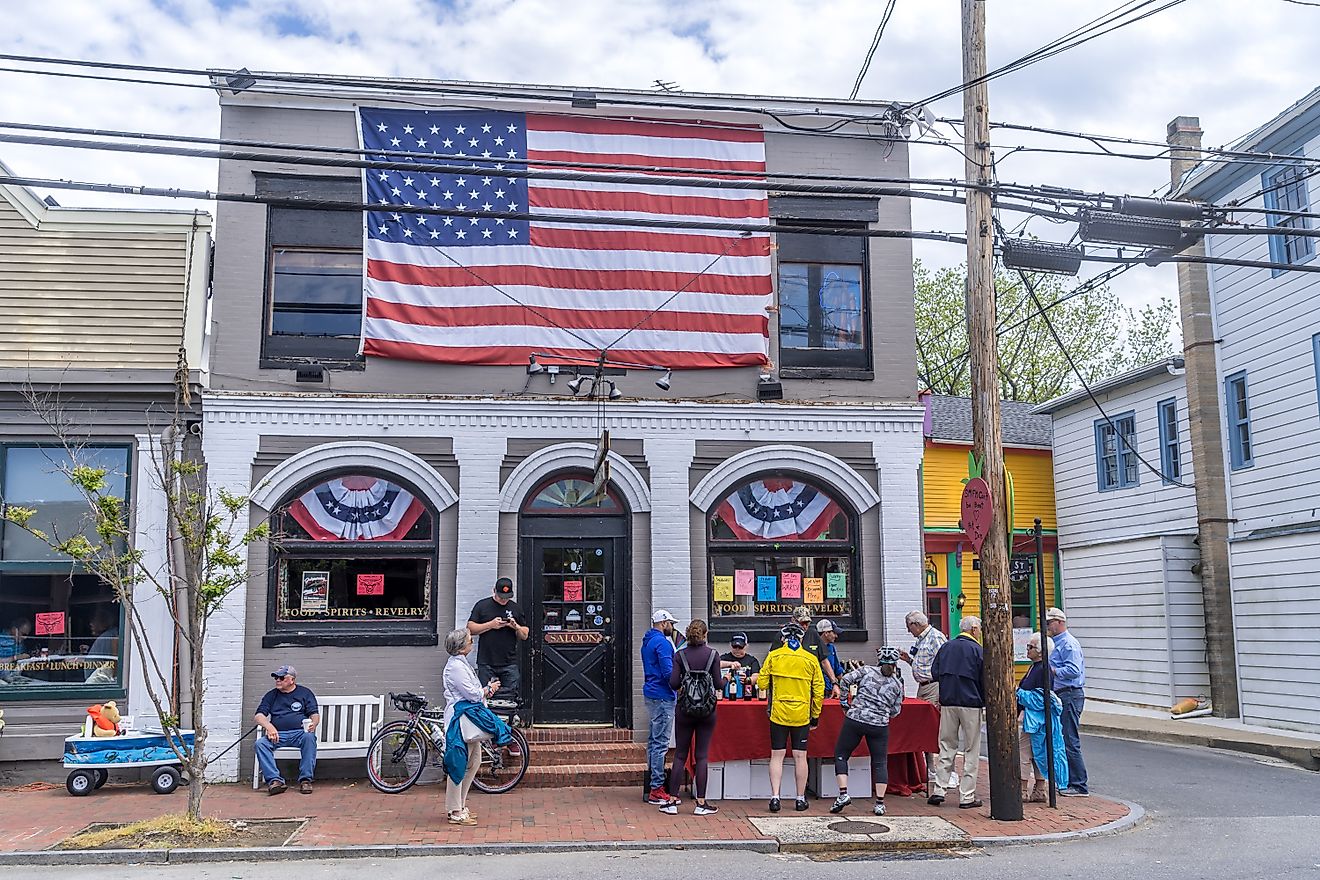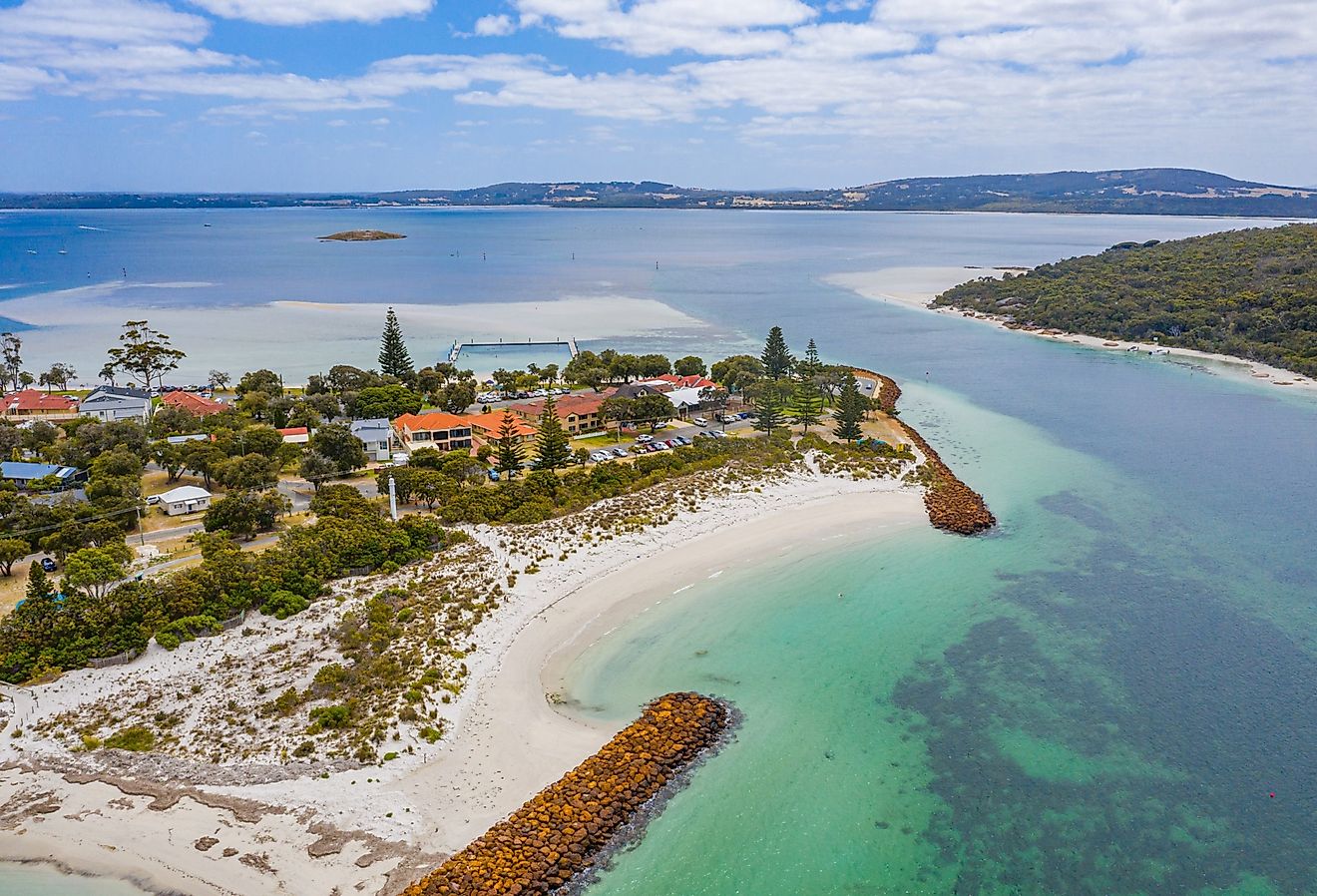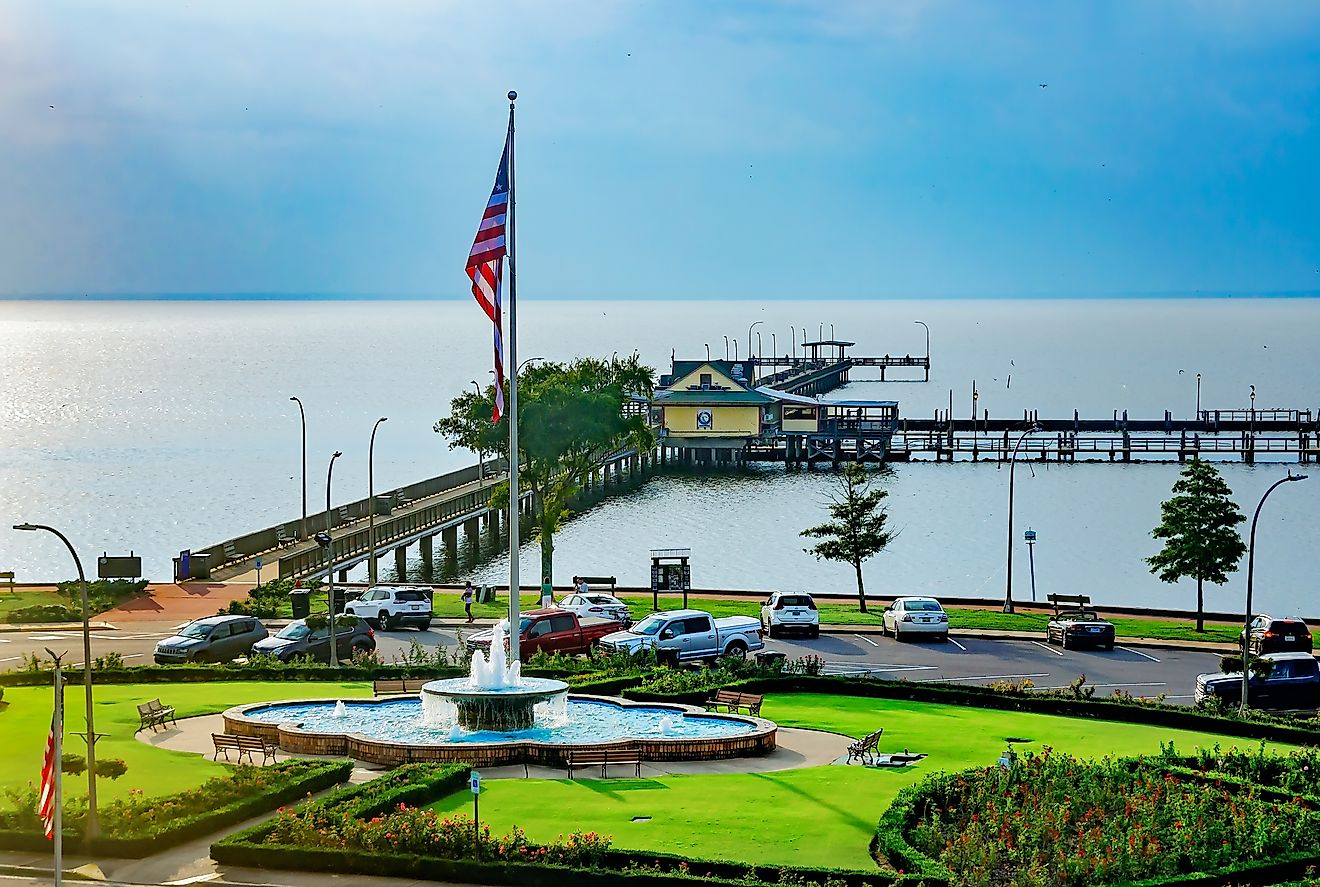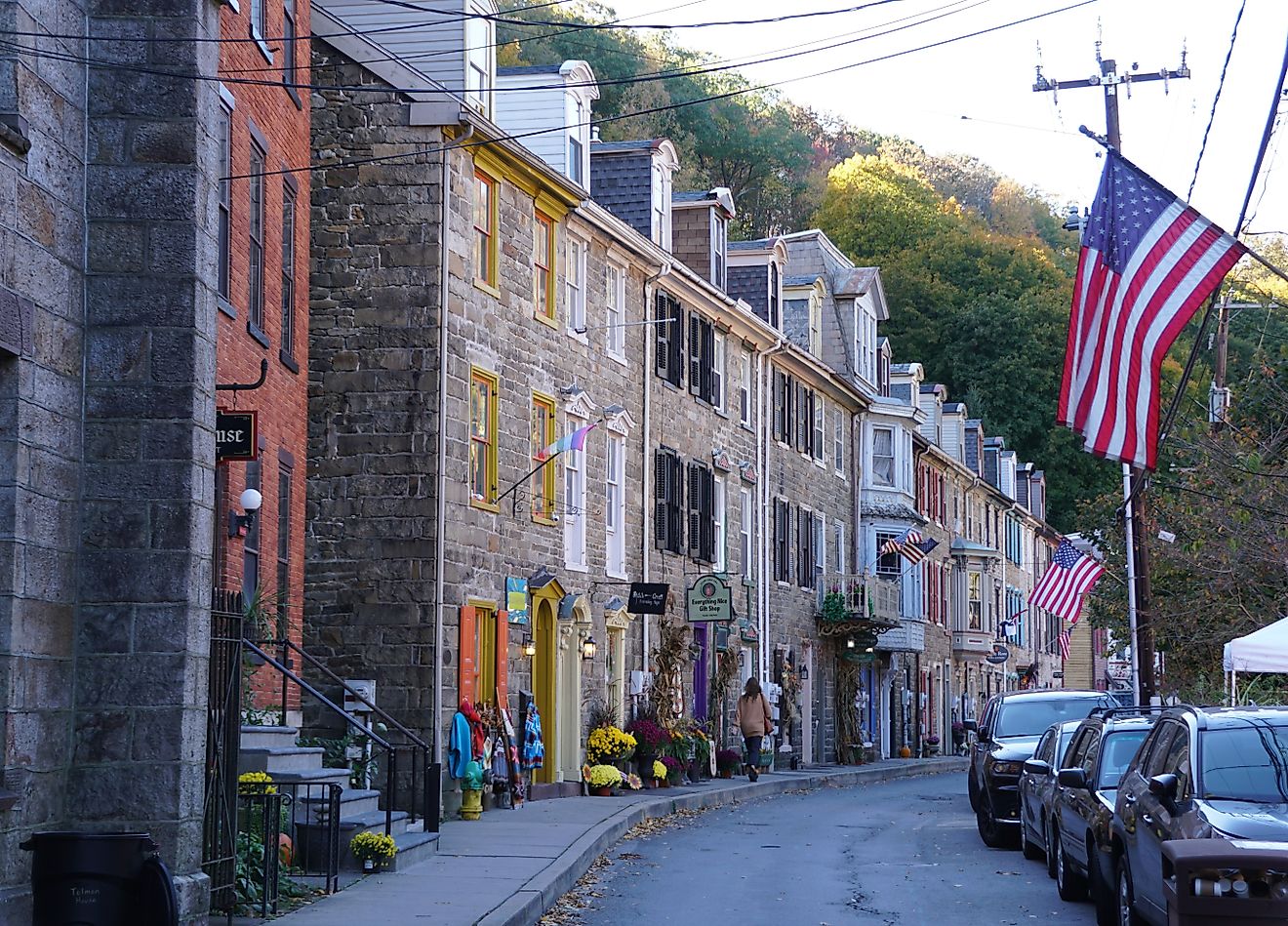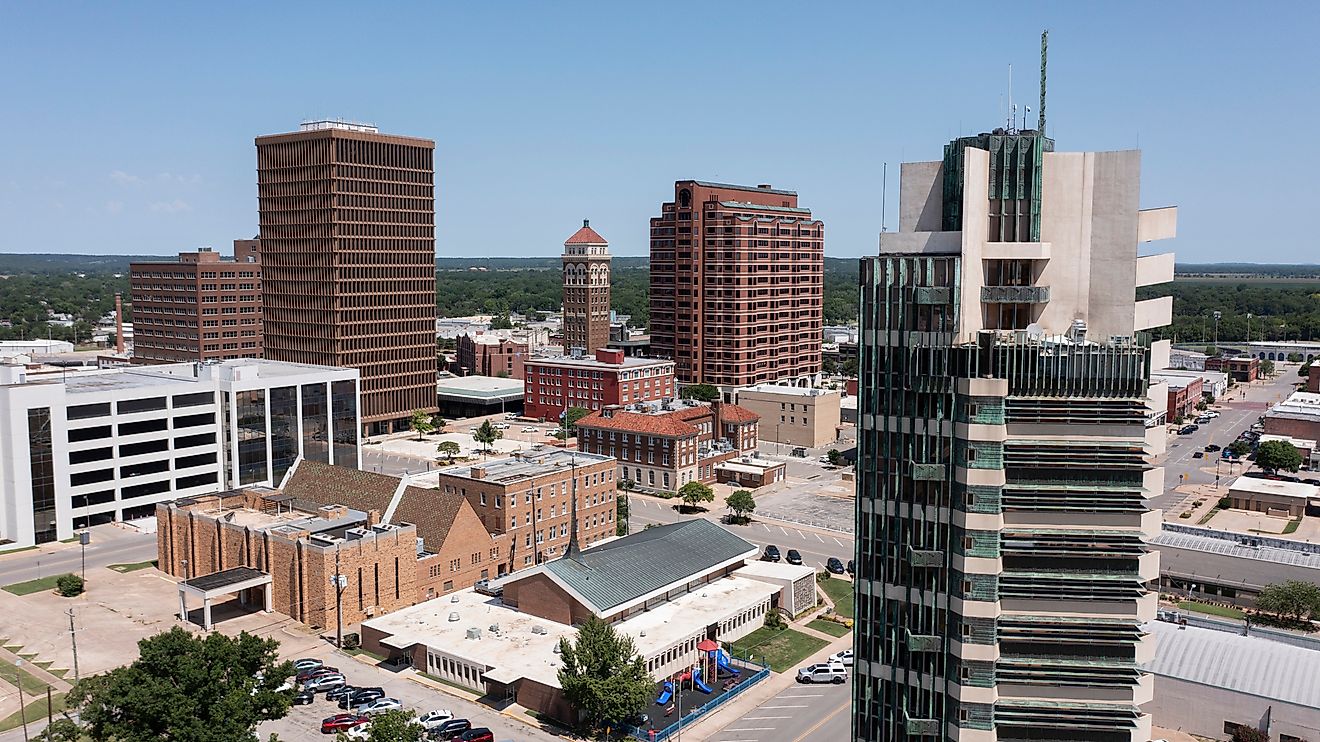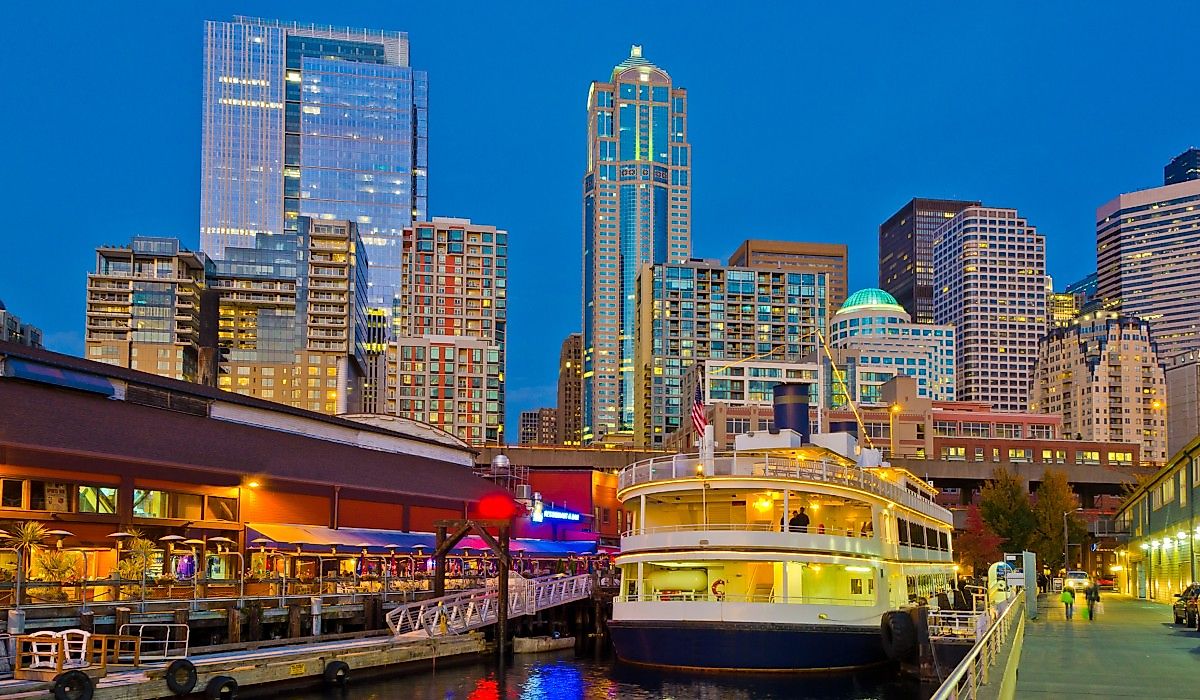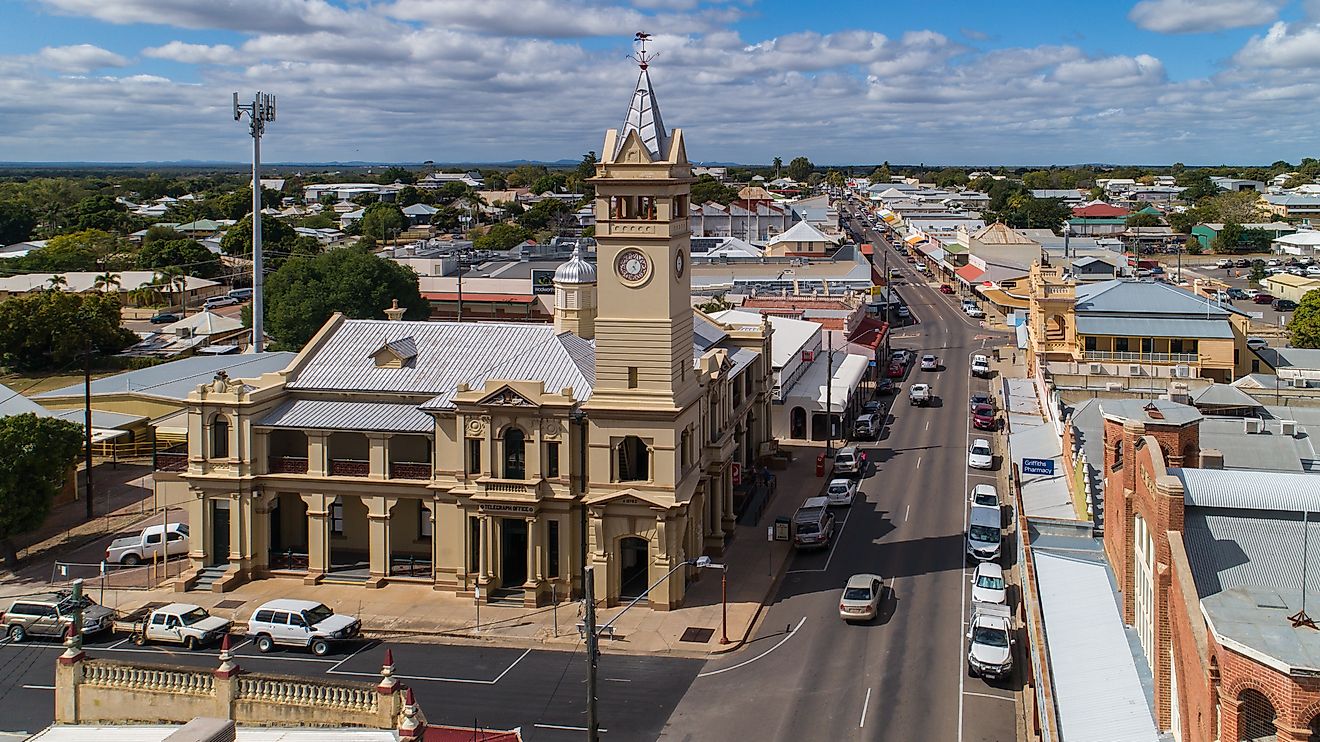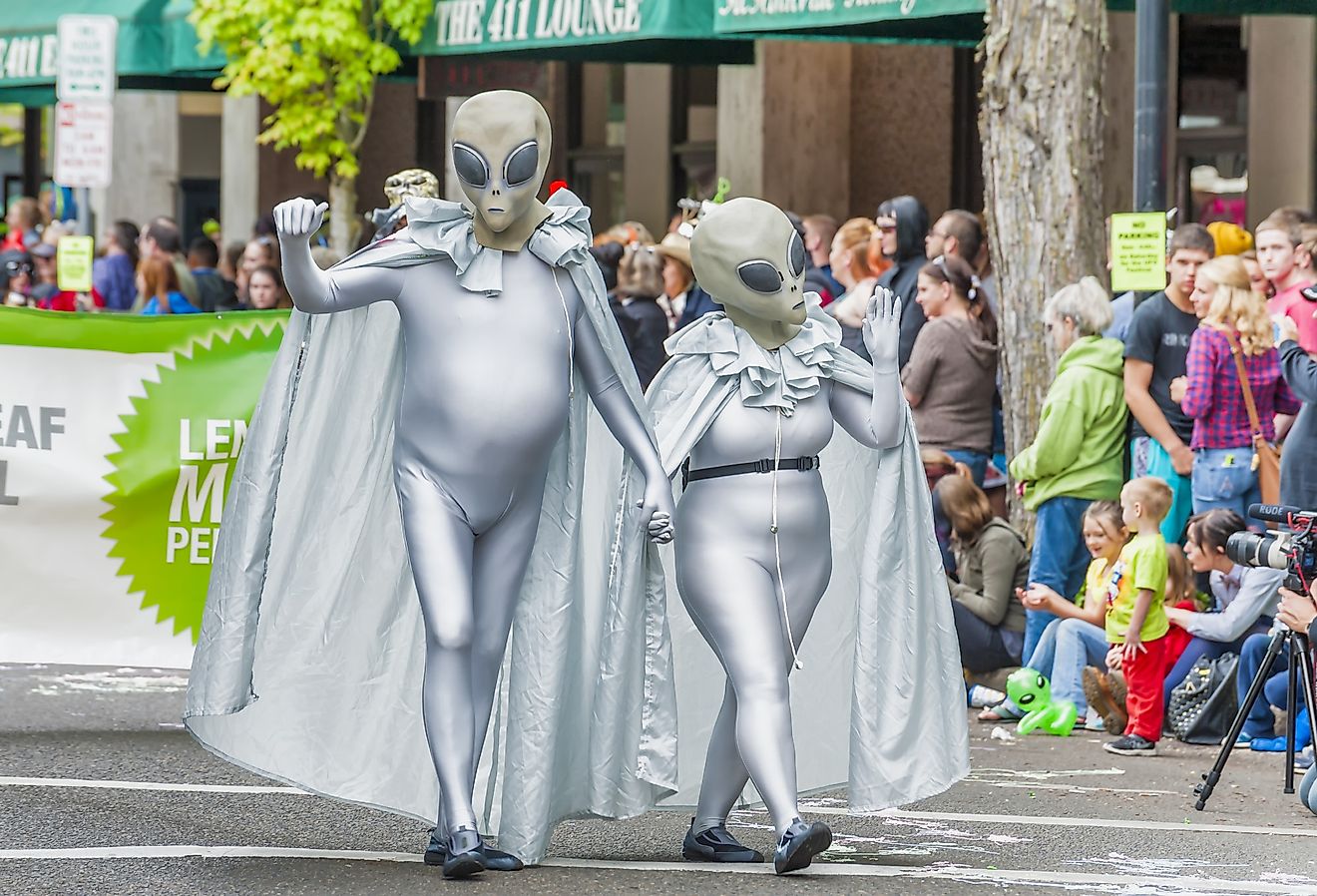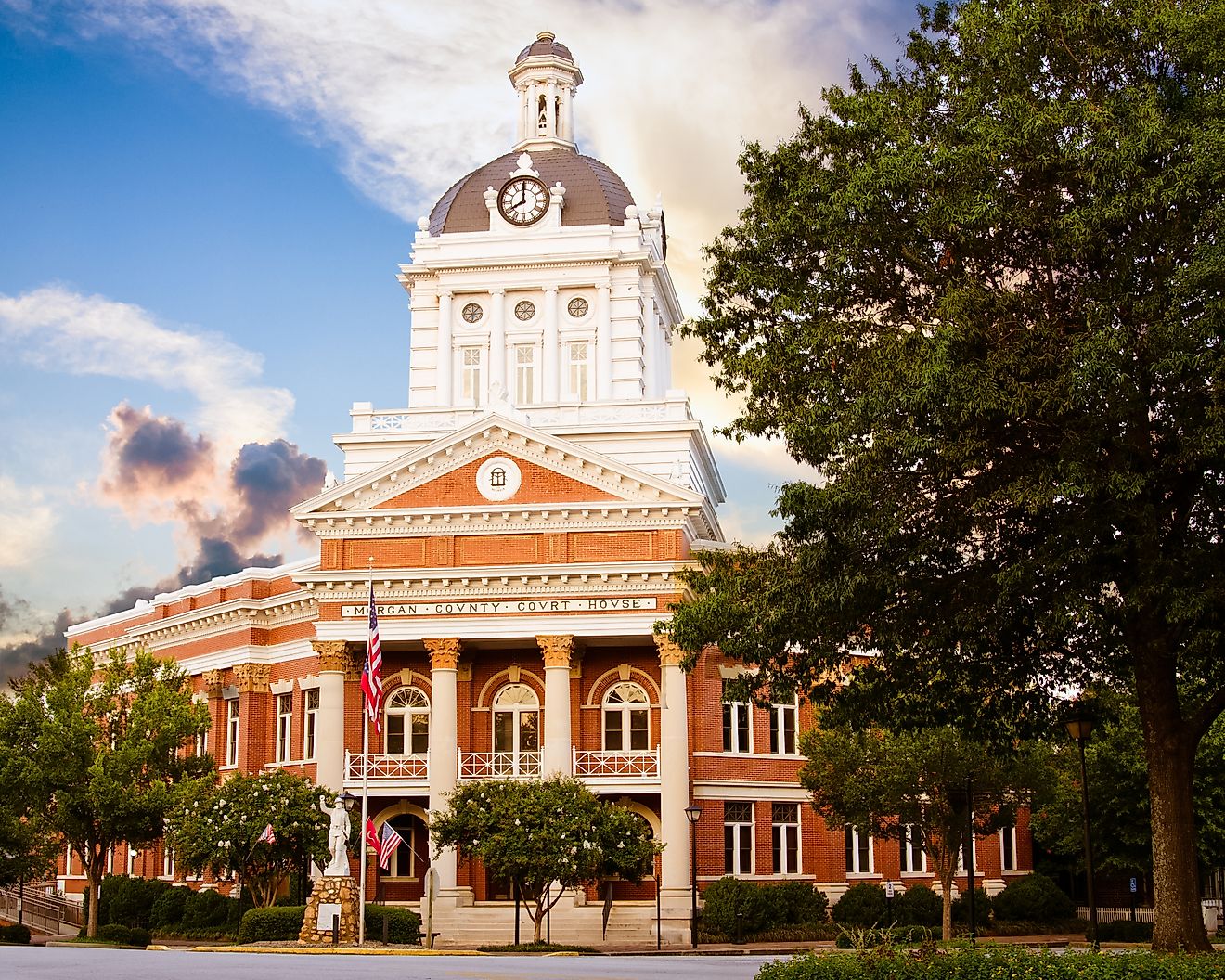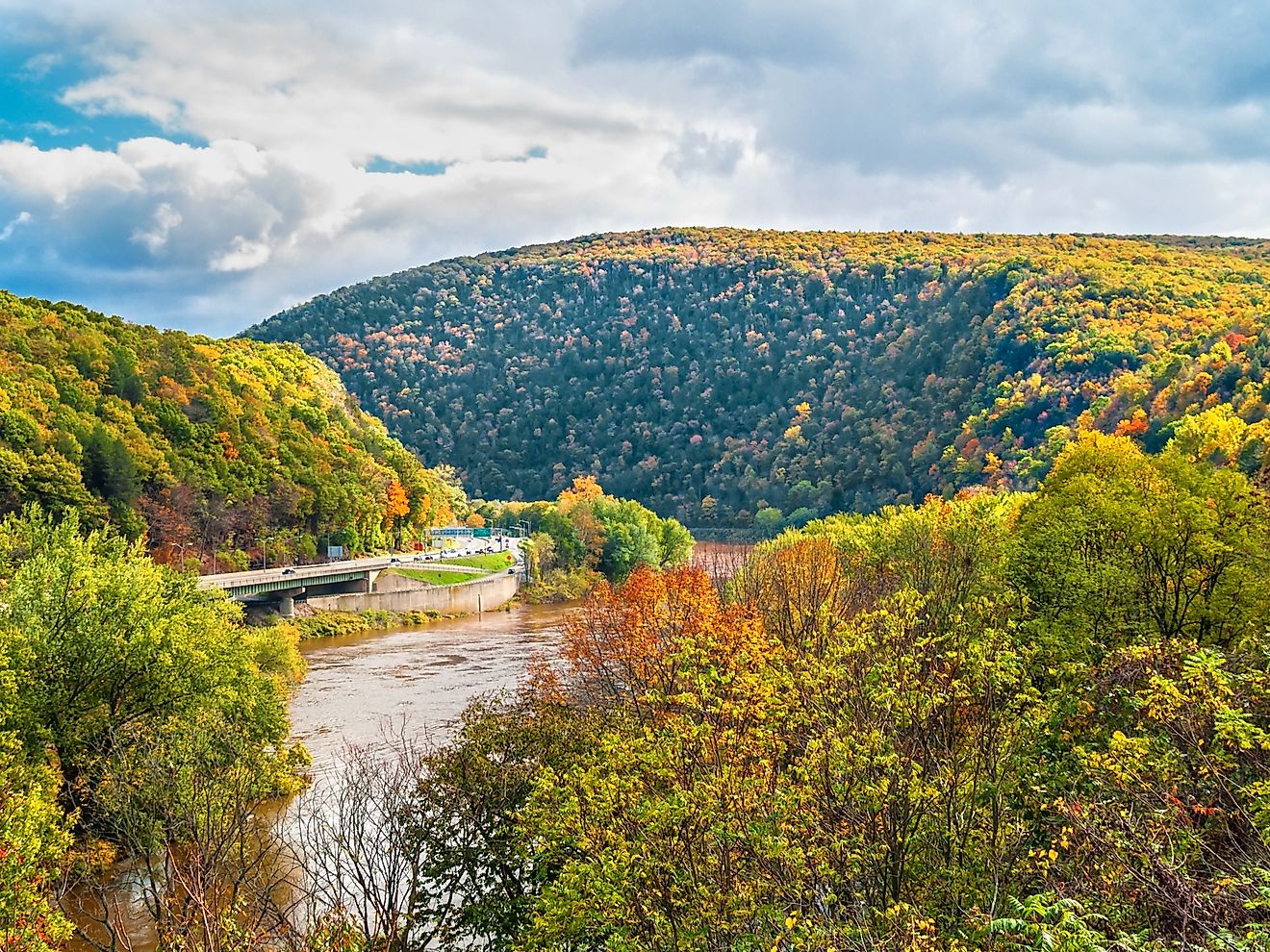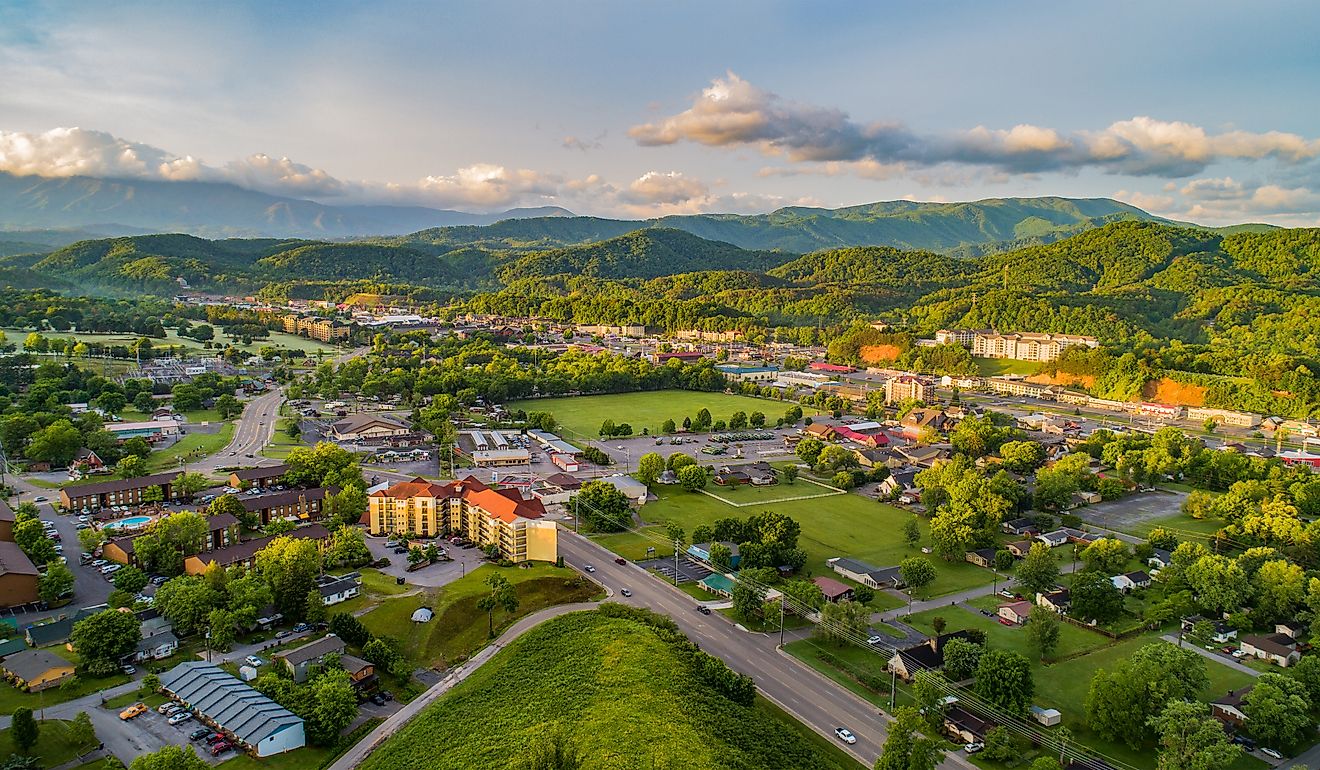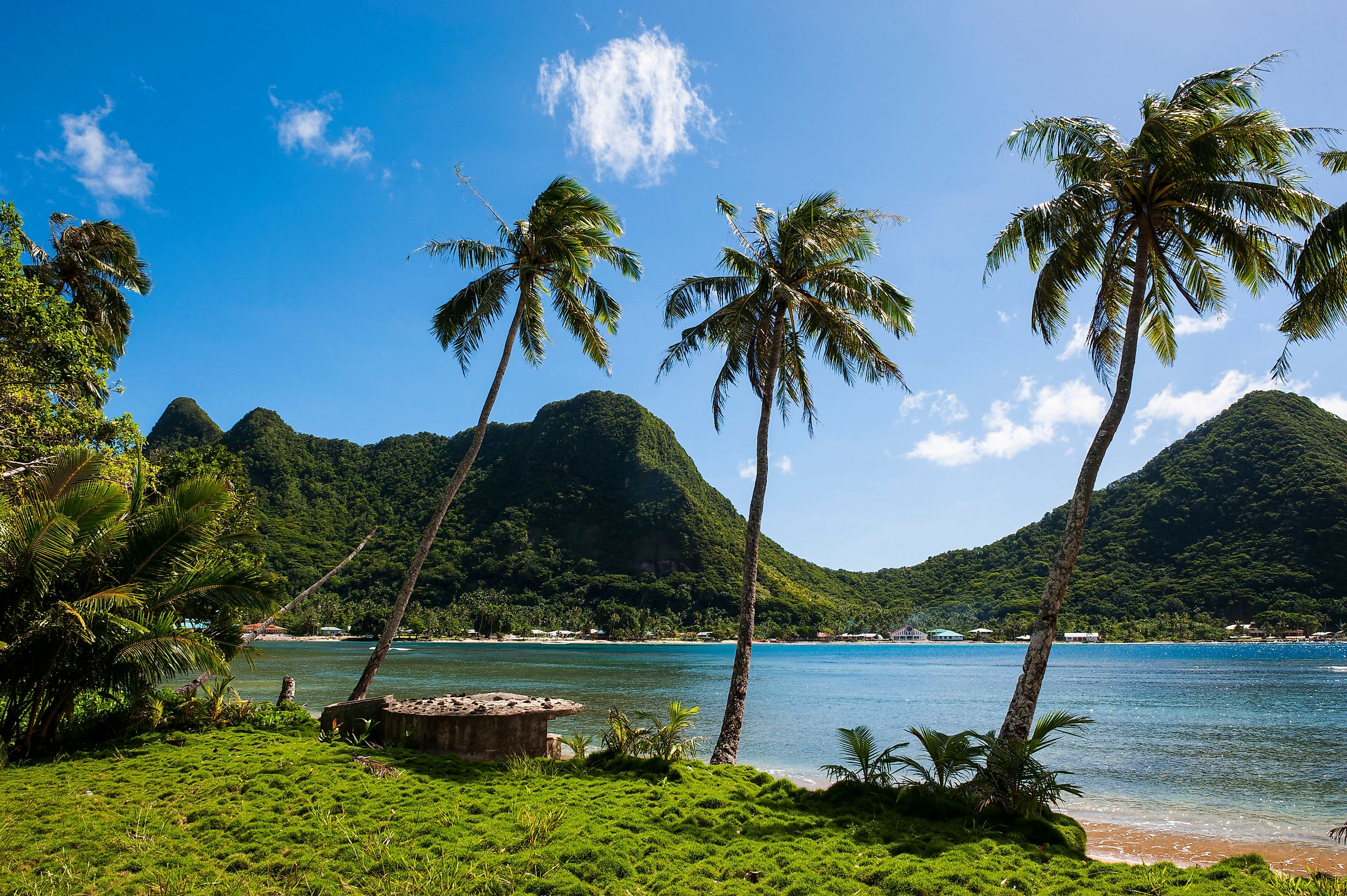
The Least Visited National Parks In The United States In 2022
The United States proudly maintains 64 national parks. Of these, the top 15 drew around 67% of the traffic, while the bottom 15 managed to attract only 1.73% of all recreational visits in 2022. Some of this can easily be chalked up to geographical isolation and/or lack of infrastructure. The whole point of certain protected lands is to let nature run wild, free from the interference of larger crowds and their corresponding needs. With that said, these public lands are open to anyone who wishes to venture there, so long as they are willing to travel and can safely and effectively roam the region without the aid of roads or sometimes even trails (Alaska, I'm looking at you). Other times, there are casual and friendly parks awaiting tourists of any kind, but they simply do not see the kind of traffic they deserve. If you are looking to switch it up and skip the crowds in 2023, make special plans for some of these overlooked places.
The 15 Least Visited US National Parks
- National Park Of American Samoa
- Gates Of The Arctic National Park
- Kobuk Valley National Park
- Lake Clark National Park
- Isle Royale National Park
- North Cascades National Park
- Katmai National Park
- Wrangell-St. Elias National Park
- Dry Tortugas National Park
- Great Basin National Park
- Virgin Islands National Park
- Congaree National Park
- Guadalupe Mountains National Park
- Voyageurs National Park
- Pinnacles National Park
1. National Park Of American Samoa - 1,887
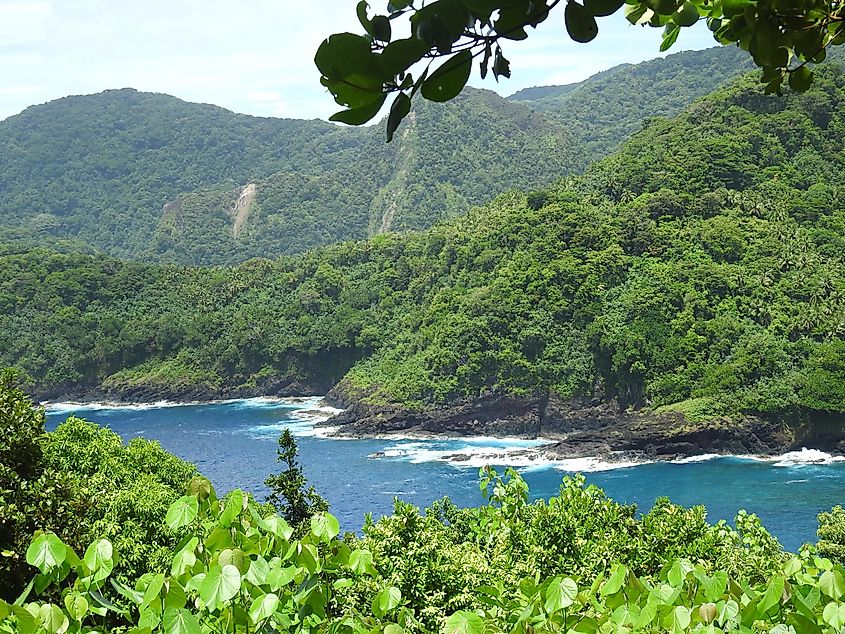
Book your plane ticket and sort out a tour itinerary for the only U.S. national park in the Southern Hemisphere. Situated some 2,600 miles South-West of Hawaii, the rarely visited National Park of American Samoa is deep in the South Pacific. Samoa, meaning "Sacred Earth," consists of 5 volcanic islands, 3 of which are part of the land portion of the park: Tutuila, Ta'u, and Ofu. These islands are predominantly tropical rainforests, with sandy beaches punctuating the coastlines. The land is leased from 7 Samoan villages, which ensures a valuable partnership in the preservation of their culture, as well as the unique habitat and Polynesian wildlife. The national park boundary also extends out into the ocean. Around 4,000 acres of the 9,100-acre park are protected waters of the Pacific Ocean. Despite the paradisiacal setting, the total percentage of recreational visits last year amounted to a mere rounding error above 0% of the total national park data set.
2. Gates Of The Arctic National Park - 9,457
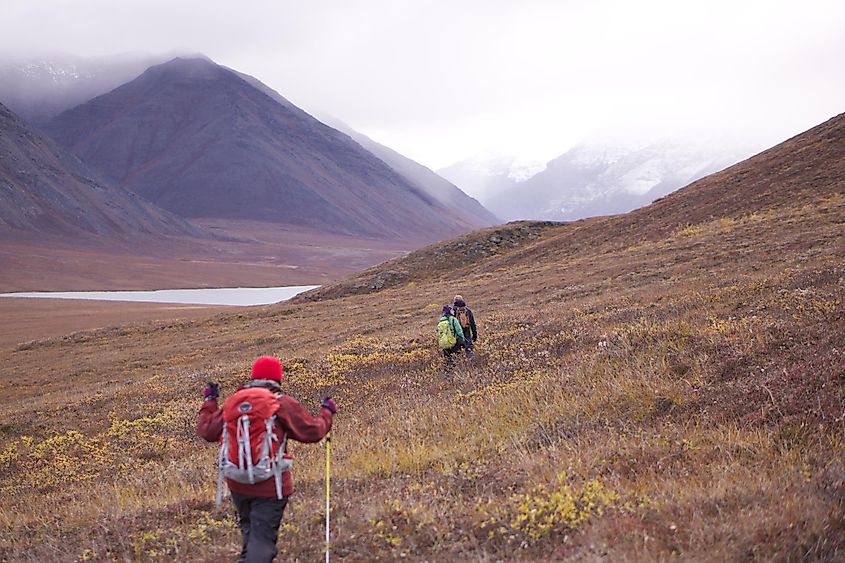
The least-visited national park in the continental United States was Alaska's Gates of the Arctic National Park. Located North of the Arctic Circle, it is no wonder that traffic is minimal compared to the likes of the Great Smoky Mountains and Grand Canyon. But despite the logistical and environmental challenges, just shy of 10,000 committed travelers (i.e., 0.01% of all recreational national park visits) still found their way here in search of raw adventure. Given that Gates of the Arctic is the second largest national park in the country, the few lucky visitors can experience true solitude, save for the migratory caribou and the bulky peaks of the Brooks Range. There are no roads or blazed trails, so everyone is on their own to respectfully explore the untampered wilderness.
3. Kobuk Valley National Park - 16,925
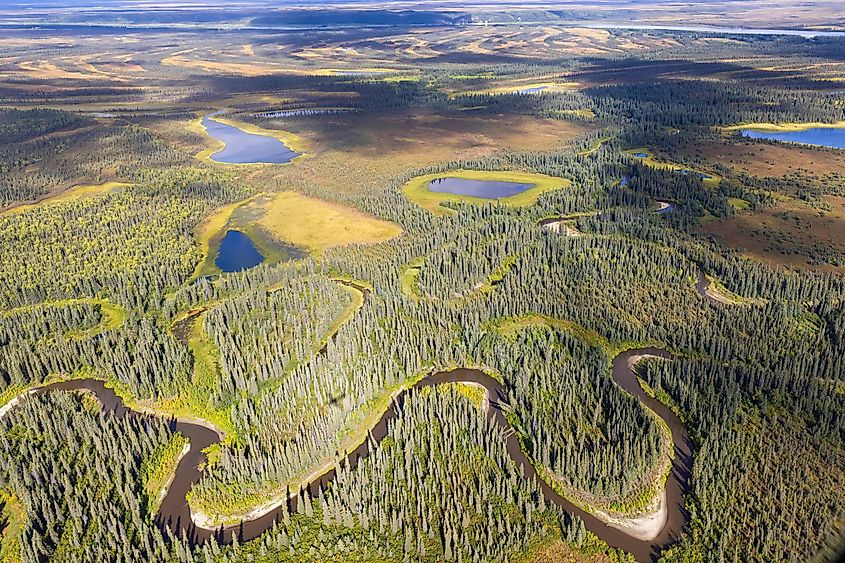
If you have already ventured into the far North, then you might as well continue West to Kobuk Valley National Park – another expanse of the impressive Alaskan wilderness that saw only marginally more visitors in 2022 (0.02% of total national park visitors). Humans are greatly outnumbered by the roughly half-million caribou that fjord the Kobuk River at Onion Portage (Paatitaaq) and trudge up the Great Kobuk Sand Dunes (i.e., the largest active dunes in the Arctic) during their biannual migration. These annual rhythms have been attracting modestly-sized groups of humans for the past 9,000 years, originally for hunting purposes (an indigenous tradition that still continues today) and now for more anthropological, curious-spectator purposes.
4. Lake Clark National Park - 18,187
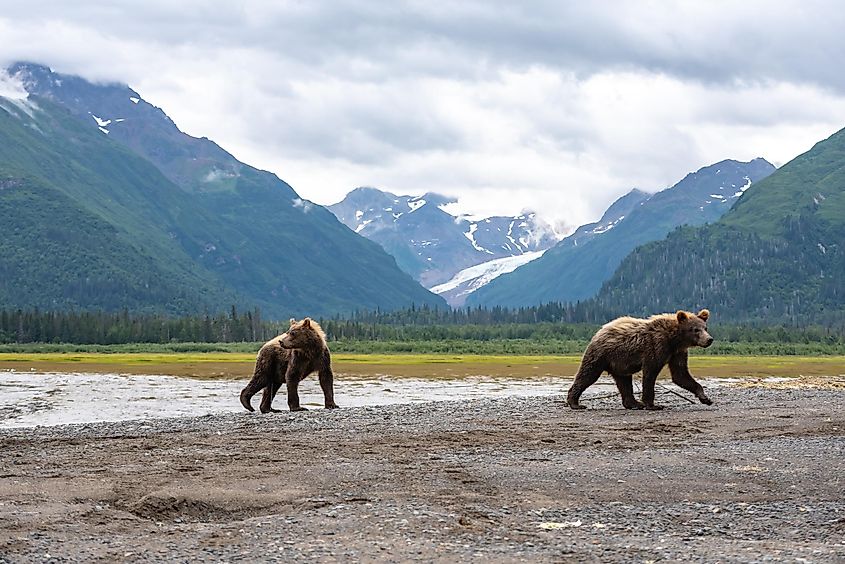
Keeping the poorly-attended party in "The Last Frontier" is Lake Clark National Park and Preserve. This stretch of Southern Alaskan wilderness protects grand-scale scenery, the headwaters of the largest sockeye salmon fishery in the world, and the ancestral land of the indigenous Dena'ina people. Lake Clark is also home to one of the most (potentially) dangerous volcanoes in the United States: Redoubt Volcano. This 10,197-foot peak within the Chigmit Mountains has blown its lid in 1902, 1966, 1989-90 (which included 23 major explosions in less than six months), and 2009. Again, this national park is free of roads and, therefore, best explored by bush planes, boats, or boots. Along with another upcoming addition to this list, Katmai National Park and Preserve, Homer, Alaska, one of the most beautiful towns in America, makes for an excellent base of operations.
5. Isle Royale National Park - 25,454
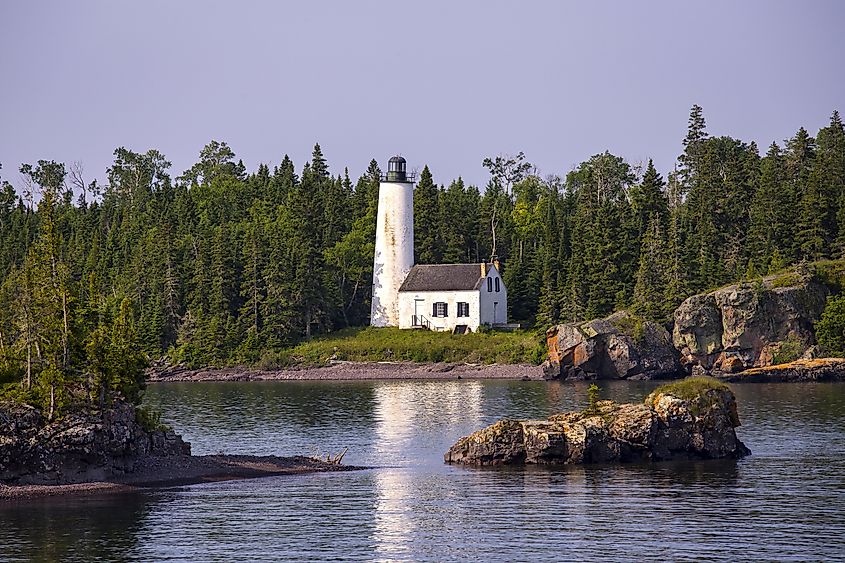
Isle Royale National Park is separated from Michigan's Upper Peninsula, Northeastern Minnesota, and Northern Ontario, Canada, by the waters of Lake Superior. The only way to access this unspoiled wilderness is via ferry or seaplane – both of which only transport passengers, not cars. This naturally weeds out the average national park visitor, but Isle Royale seems more invested in promoting quality over quantity. The rugged archipelago is perfect for old-school backpackers, paddlers, boat folks, divers, and solitude seekers. There are 165 miles of hiking trails spread across the 850 square-mile boundary, historic lighthouses, defunct copper mines to explore on land, and shipwrecks to observe below the surface of the most Northerly Great Lake.
6. North Cascades National Park - 30,154
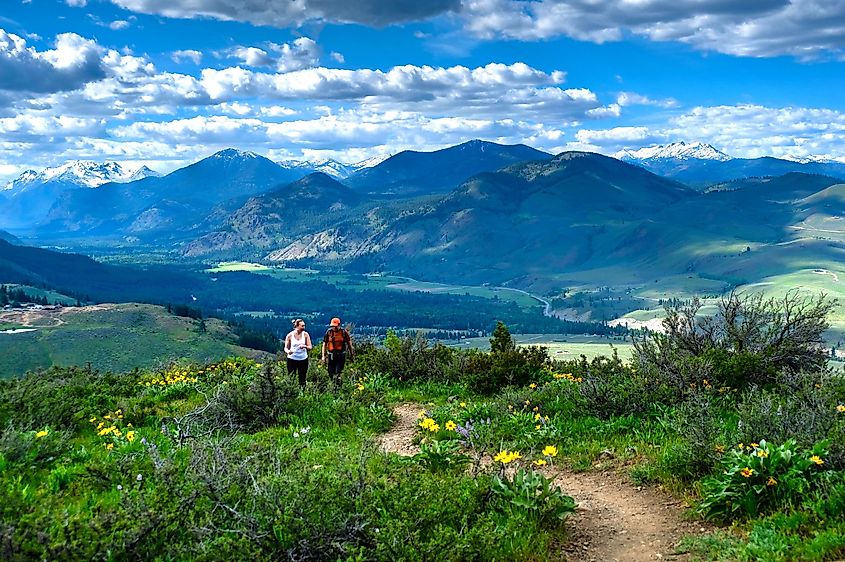
Washington demonstrates quite a dichotomy among its national parks. Together, Olympic National Park and Mount Rainier National Park brought in over 4 million visitors in 2022, while North Cascades National Park (close to 5% of all recreational visits for the year across the country) barely eclipsed 30,000 visits or 0.03% of the total data set. The reason for the dramatic discrepancy is certainly not a lack of aesthetic appeal. Rather, the blessing-in-disguise limiting factor appears to be, wait for it…a lack of roads. A bold spirit and a bit of backcountry know-how are therefore needed to explore this place. But if selecting this patch of Washington wilderness (still only a 3-hour drive from Seattle), prepare to be greeted by numerous waterfalls (including some of the tallest in the nation) that run down from frosted peaks, plus over 300 glaciers, mythical old-growth forests, and no shortage of free-roaming, non-habituated creatures (be bear aware!).
7. Katmai National Park - 33,908
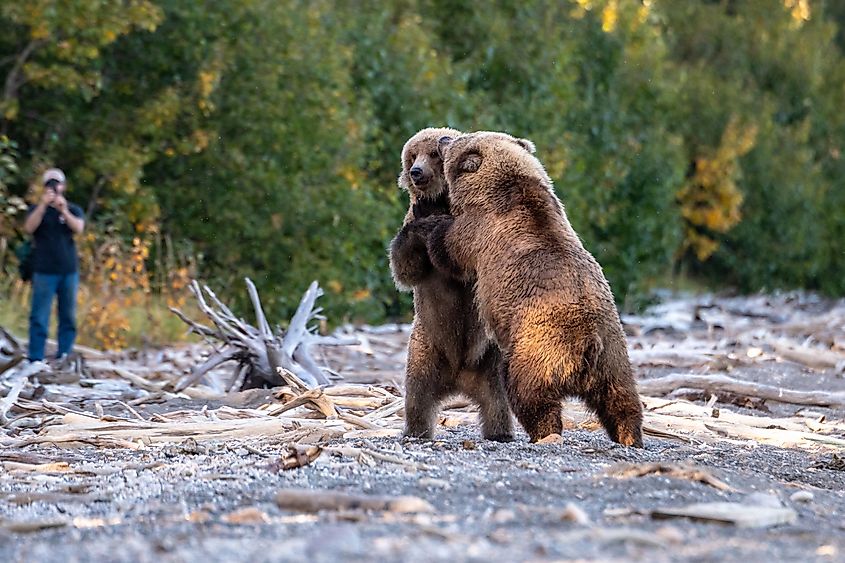
Just South of Lake Clark National Park and Preserve is the 4,093,077-acre Katmai National Park and Preserve – a place of volcanic activity (and a spectacularly turbulent history), ancient human culture, habitats for salmon, and a sanctuary for bears (those last two things tend to pair together). In 1912, a new volcano, later named Novarupta, burst onto the scene with the largest eruption of the 20th century – dramatically reshaping the landscape and creating the impetus for the formation of the park, which came to be six years later. The modest influx of annual visitors can now peruse the Valley of Ten Thousand Smokes, and get a sense of Novarupta's supreme power. But the most popular attraction is Brooks Camp, where the behemoth brown bears can be viewed from a safe yet intimate distance.
8. Wrangell-St. Elias National Park - 65,236
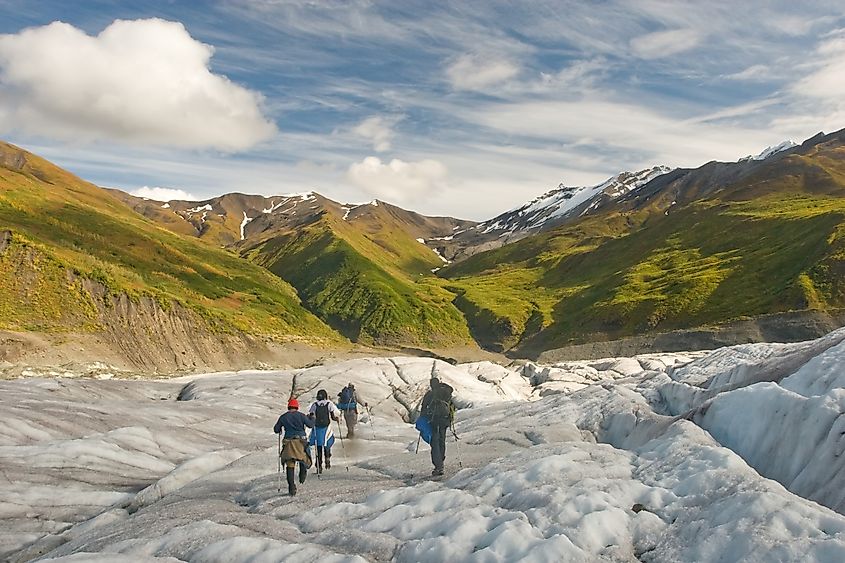
At 13.2 million acres, Wrangell-St. Elias is the largest national park in the country. (Guess what? It's in Alaska). Not only is the sheer mass to be marveled at but so is the impressive range in elevation. This place goes from sea level, at the Gulf of Alaska, to the 18,008-foot summit of Mount St. Elias (the second-highest peak in the United States). If that were not enough, this park also sports the largest concentration of glaciers in North America, which crawl amongst the amazing mountains. And to cap it all off, this federally protected space is part of an even bigger global project: the 24-million-acre Kluane / Wrangell-St. Elias / Glacier Bay / Tatshenshini-Alsek UNESCO World Heritage Site.
9. Dry Tortugas National Park - 78,488
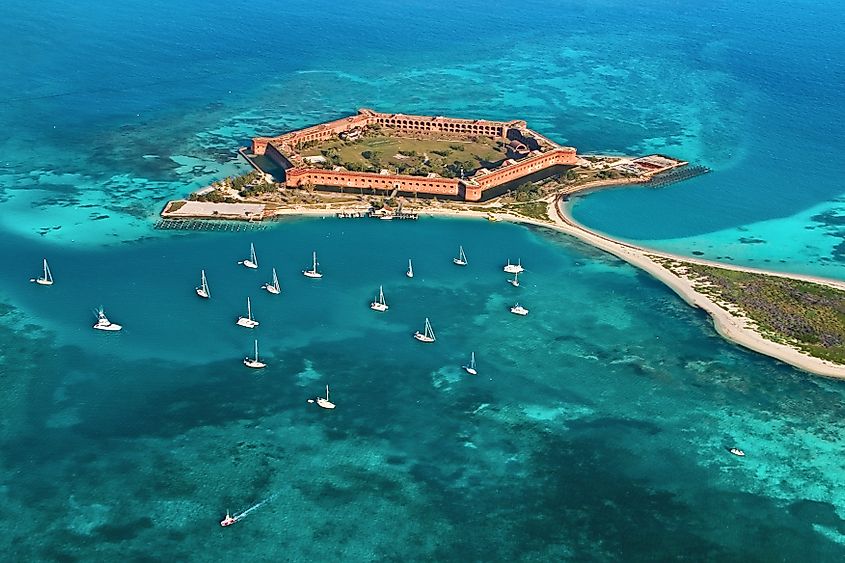
Heading from the Northern reaches of Alaska all the way to Florida's Southern extension, Dry Tortugas National Park is another remote place with limited access that thins out the herd. Roughly 70 miles West of Key West, this stretch of seven islands can be reached solely by boat or seaplane (a familiar trend). On land, the focal point is Fort Jefferson. This facility was constructed using 16 million imported bricks between 1846 to 1876. It mainly operated as a prison during the Civil War, with its most infamous prisoner being Dr. Samuel Mudd, who was convicted of conspiracy in the assassination of Abraham Lincoln. However, most of the park's defined border consists of open water. This means that snorkeling and diving are two of the go-to activities, with coral reefs and colorful fish just waiting to strut their stuff.
10. Great Basin National Park - 142,115
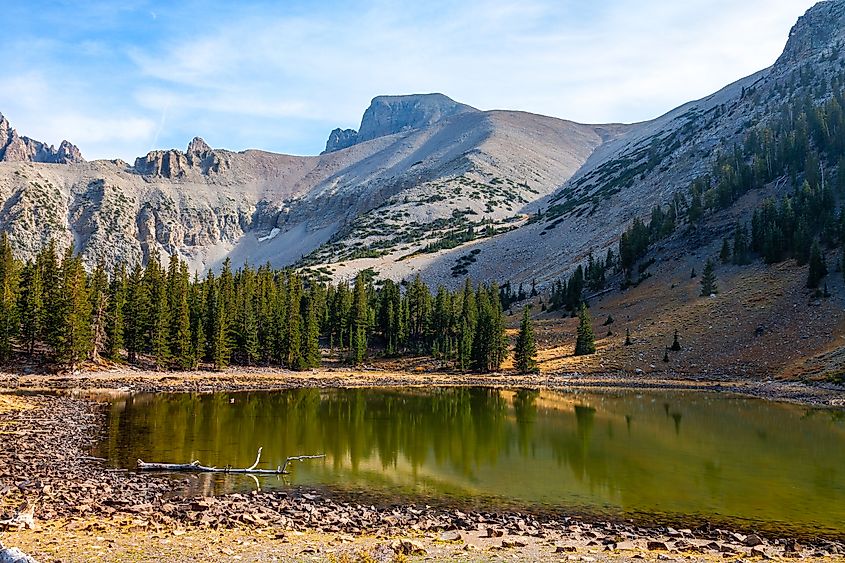
Nevada's Great Basin National Park protects 77,000 acres of the Great Basin Desert (one of the four major deserts in the United States) and the Hydrographic Great Basin. Though a modest day trip from the eternal crowds and commotion of the Las Vegas Strip, this under-visited gem is tranquil and perfect for marveling at the grandeur of the night sky, unleashed in the absence of light pollution. Those looking to discover the highs and lows of the area should attempt to summit the 13,063-foot Wheeler Peak (the second-highest in the state), enjoy the scent of the sage-lined hills on the way down, and then join a guided, subterranean tour of the stalagmite and stalactite rich, limestone-lined passages of Lehman Caves.
11. Virgin Islands National Park - 196,752
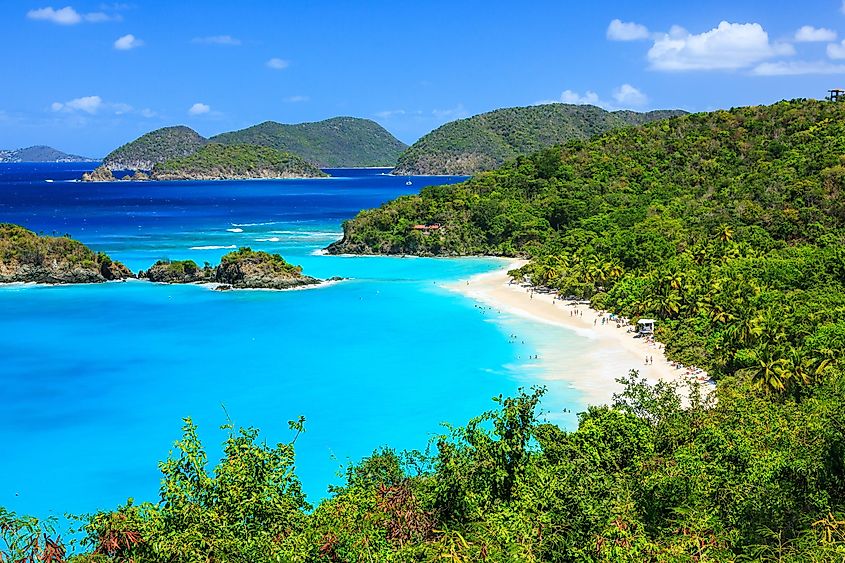
Way down in the Caribbean, in the unincorporated territory of the U.S. Virgin Islands, or simply, Virgin Islands, is the heavenly national park of the same name. Occupying two-thirds of the island of St. John's (one of three islands amongst the defined collection), as well as 5,650 acres of coral gardens and seascapes, Virgin Islands National Park makes available aesthetically startling scenery, delicate ecosystems, indigenous culture (including the ancient petroglyphs of the Taino people), and the historical reflections that come into play when visiting the former slave-labor sugar plantations. Because of this interplay of significant factors, the site keeps expanding its scope of protection. In 1956, Laurence Rockefeller purchased the island in order to christen the national park. In 1962, the offshore boundary was extended to reap the same protections. And then, in 2001, another 12,708 acres of federally owned, submerged land, all within 3 miles of shore, was designated as the Virgin Islands Coral Reef National Monument, with the primary object being the preservation of the vital coral reefs. As appealing as this may all sound, there is no avoiding the significantly more intensive travel that is required to get here, compared to national parks in the lower 48 states.
12. Congaree National Park - 204,522
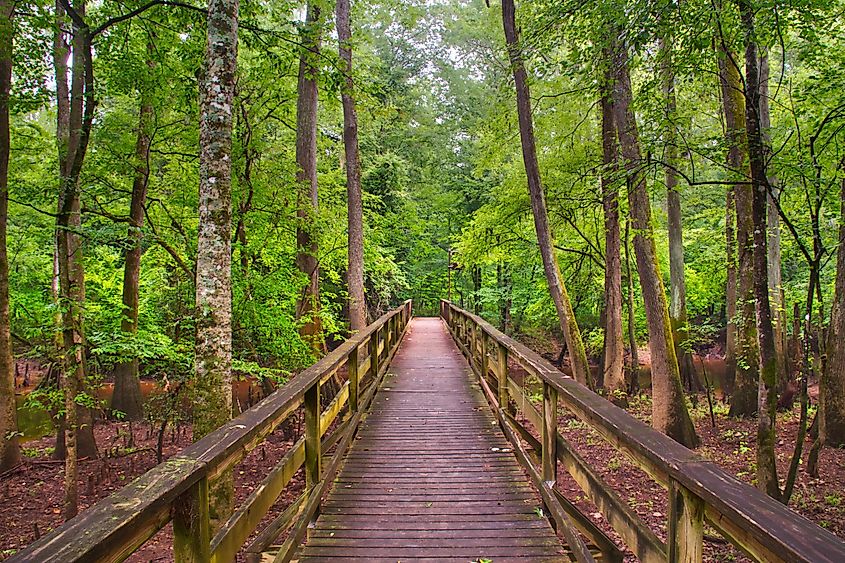
While a clear pattern has emerged to explain the absence of tourism for many of the national parks listed so far, Congaree National Park certainly does not fit the bill and deserves more fanfare. The largest concentration of champion trees (a designation given for size and significance) in North America is a mere 30-minute drive Southeast of Columbia, South Carolina. And yet, attendance pales in comparison to the redwood-adoring crowds of California's parks and monuments. But limelight or not, the old-growth hardwoods of Congaree create one of the highest forest canopies in the world. In fact, 25 trees in Congaree National Park take the crown for tallest of their species anywhere in the country. Visitors can immerse themselves in the floodplain woods and all the corresponding biodiversity by strolling the 2.4-mile boardwalk loop or taking a guided canoe tour.
13. Guadalupe Mountains National Park - 219,987
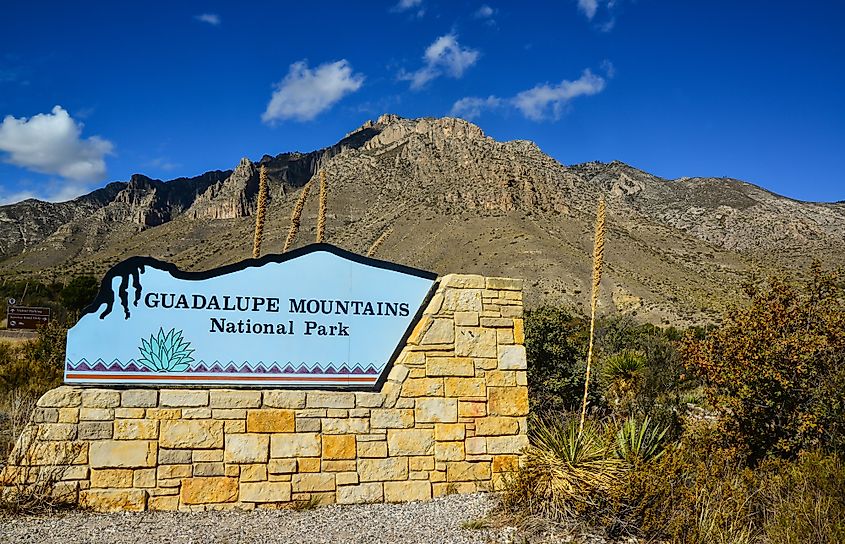
Just South of the New Mexico border and about 115 miles East of El Paso, Texas, is an 86,416-acre gem of a park that merges the beauty of the Chihuahuan Desert with the rocky, rolling Guadalupe Mountains. Guadalupe Peak tops out at 8,751 feet above sea level, making it the highest point in all of Texas, while the 1,000-foot-tall limestone cliff called El Capitan (not to be confused with the one in Yosemite National Park) is another superb geological feature. To add more fodder for the waves of tourists that are surely due to swell in the near future, the Guadalupe Mountains are part of a 260 to 270-million-year-old reef system called Capitan Reef. Most of it is buried, but the 12 miles that are exposed within the park tease the 400-mile-long U-shaped fossilized system.
14. Voyageurs National Park - 221,434
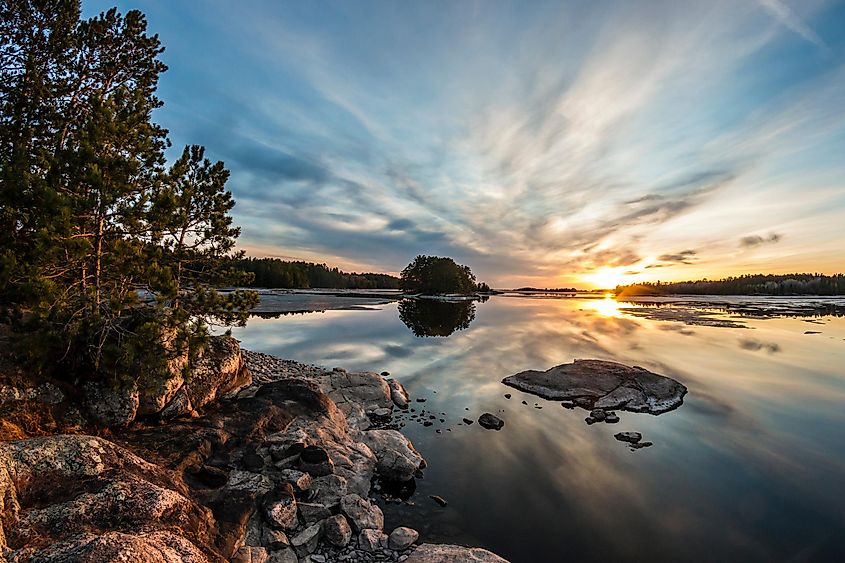
Northern Minnesota presents a wholesome national park that is open year-round, highly rated online, and free for all to enter. So why did it rank at a lackluster 50th on the 2022 attendance charts? Well, Voyageurs National Park is largely a water-based phenomenon. While there are still plenty of hiking trails to tackle and campsites to enjoy, the desire to drive or paddle a boat, and the ability to navigate such a craft, is something that tends to resonate with a smaller cohort. Also, the reality of four-season conditions in an exposed setting likely deters more people than they attract. Hardy outdoorsy folks will always be in for a treat up here, but large crowds may be kept at bay for the foreseeable future.
15. Pinnacles National Park - 275,023
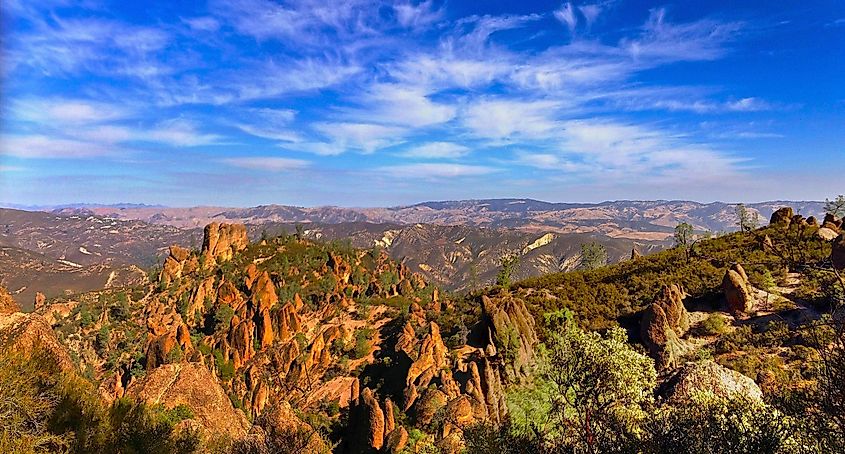
California is the most populous state and maintains many well-trodden National Park Service units, yet Pinnacles National Park somehow remains elusive. Granted, this is the only entry on this list to crack a quarter-million visitors last year, but given that it has easy road access, a mere 75 miles South of San Jose, it remains surprising that attendance hasn't yet taken off. The unique formations from which the park gets its name were created over the course of tens of millions of years by tectonic and volcanic activity, as well as persistent erosion, making Pinnacles National Park a momentary snapshot of an ever-changing landscape. The mountain ridges, talus caves, and jagged rock formations act as a signal to hikers and climbers that ample fun is to be had. Bird watchers will also be thrilled to catch glimpses of falcons, eagles, and the once nearly-extinct California condor. So if you were late to the party with reservations at Yosemite or Joshua Tree, give this underrated park a whirl.
Some of the least visited national parks are likely to remain under the radar due to their difficult locations, challenging environments, and intentional lack of infrastructure (keep it wild!). However, others are ripe for the taking, with nothing required but the willingness to bypass some of the long-standing popular parks in favor of a fresh experience. Whatever the case, and regardless of traffic, these 15 least visited national parks are still vital additions to the catalog of federally protected environments.
| Rank | National Park | No. Of Visitors (2022) |
|---|---|---|
|
1 |
National Park Of American Samoa |
1,887 |
|
2 |
Gates Of The Arctic National Park |
9,457 |
|
3 |
Kobuk Valley National Park |
16,925 |
|
4 |
Lake Clark National Park |
18,187 |
|
5 |
Isle Royale National Park |
25,454 |
|
6 |
North Cascades National Park |
30,154 |
|
7 |
Katmai National Park |
33,908 |
|
8 |
Wrangell-St. Elias National Park |
65,236 |
|
9 |
Dry Tortugas National Park |
78,488 |
|
10 |
Great Basin National Park |
142,115 |
|
11 |
Virgin Islands National Park |
196,752 |
|
12 |
Congaree National Park |
204,522 |
|
13 |
Guadalupe Mountains National Park |
219,987 |
|
14 |
Voyageurs National Park |
221,434 |
|
15 |
Pinnacles National Park |
275,023 |
